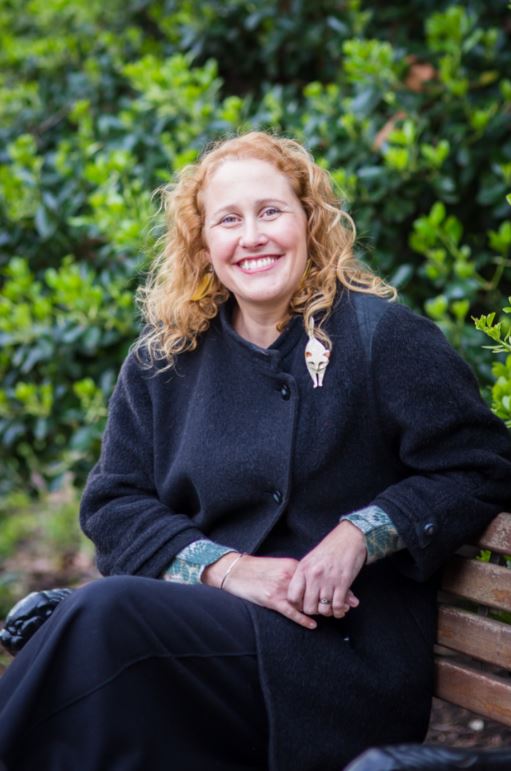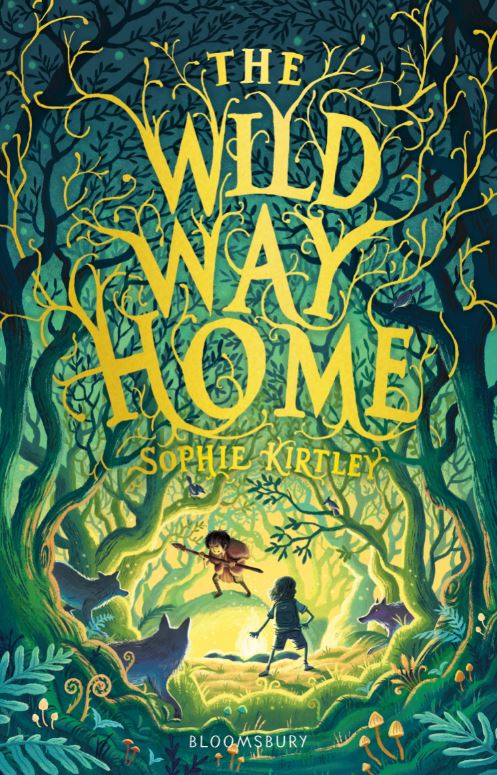We are thrilled to welcome children’s author Sophie Kirtley into The Reading Realm today to talk about her brand-new Stone-Age adventure story, The Wild Way Home…

Without giving too much away, can you tell us a bit about your new book The Wild Way Home?
Hello there! The Wild Way Home is a story of friendship, courage and adventure, set in the Stone Age. There may be dangers… there may be mysteries… there may be secrets…
The book begins with a poem by W.B Yeats – did this inspire you or was it a poem you found later on in the writing process?
I have loved this poem for a long long time. The first lines: ‘I went out to the hazel wood, because a fire was in my head’ have always struck me as very wise behaviour – if you have troubles on your mind, going out into the natural world is a good way to settle your soul. It’s exactly this that Charlie does in The Wild Way Home… except that poor Charlie gets met with a little more than was bargained for…
How would you say your main characters Charlie and Harby are similar? How are they different?
Great question! Charlie and Harby both care deeply for the important people in their lives – they each sacrifice a lot for their families…and for each other. They both are curious and they both are courageous too. Another similarity is that they both appreciate a good giggle… and a good meal!!
Clearly they seem so different on the surface though: Harby is wild, quick-witted and primed for survival, whereas Charlie is more bumbling and day-dreamy. I think that in the course of the story they both learn to appreciate… and even assimilate… each other’s quirks and foibles. I guess that’s one of the points I was trying to get across – no matter how different someone might seem from you, there will always be something that you have in common.
The book gallops along and is full of tension and action – what did you have to edit out of the story to ensure it maintained this page-turning quality?
Haha – I feel like you’ve seen right through me! SO MUCH EDITING!! I’m the least concise person in the world! I also have a tendency to want to explore my characters’ thoughts and feelings a bit too much – there were so many moments of navel-gazing that simply had to be zapped in order to keep the pace charging along. Hooray for wonderful editors!!

There are some beautiful descriptions of the woods and nature throughout the story. I wondered if Mandel Forest was inspired by a place near you? Did you spend a lot of time outside whilst writing this book?
Mandel Forest is indeed based on a real place. I grew up in Northern Ireland and when I was wee I played with my friends in a place near where we lived called Mount Sandel Forest – I remember the feeling of the place as much as anything else – its sense of mystery and seclusion… and wild freedom. Only years later did I realise that in this forest archaeologists had found the remains of a Stone Age settlement. The idea that I’d played somewhere where children had been playing for millennia was the spark which ignited this story. I revisited Mount Sandel Forest when I was writing The Wild Way Home – it is still just as beautiful and mysterious!
What research into the Stone Age did you have to carry out? Is this an area of history that has always interested you? Do you have an interesting Stone Age fact you can share with our readers?
I’ve always loved history, and I love to think about all the different people who previously lived in places we now call ‘ours’. I admit I did become a bit obsessed with the Stone Age while researching this book! I visited museums and standing stones; I read countless books and articles too. One of the things I love about this deepest history is how little we know and how much we suppose. There’s a lot of what feels like story-making as we use artefacts as clues to unravelling our ancient past.
A (slightly icky) Stone Age Fact: Stone Age people never cut their toe-nails. Their nails would’ve naturally worn down, and their skin would’ve hardened as they ran barefoot across rough terrain. No such thing as a cavemanicure!
Have you got any ideas or tips about how teachers could use The Wild Way Home in their class?
I know a lot of schools teach the Stone Age as part of the history curriculum. I tried to be very faithful to what we know about this period, basing, for example, the cave art in The Wild Way Home on real cave art (for example at Lacaux and at Chauvet in France) that children might even learn about in class. Perhaps children might even want to have a go at creating their own cave art using natural materials – elder berries make a wonderful deep purple dye; dandelion petals make a lovely ochre. The book also might lend itself to lots of outdoor learning or forest school opportunities – I’d love it if The Wild Way Home inspired teachers and children to have their own wild adventures!
Finally, can you describe The Wild Way Home in three words?
Ha! I told you how bad I was at being concise and now you spring this one on me! OK, I’ll give it a go:
Heartfelt Stone-Age Adventure
Please ignore the sneaky hyphen!
Thank you for interviewing me; I really enjoyed answering your questions. Happy reading and happy adventuring!

